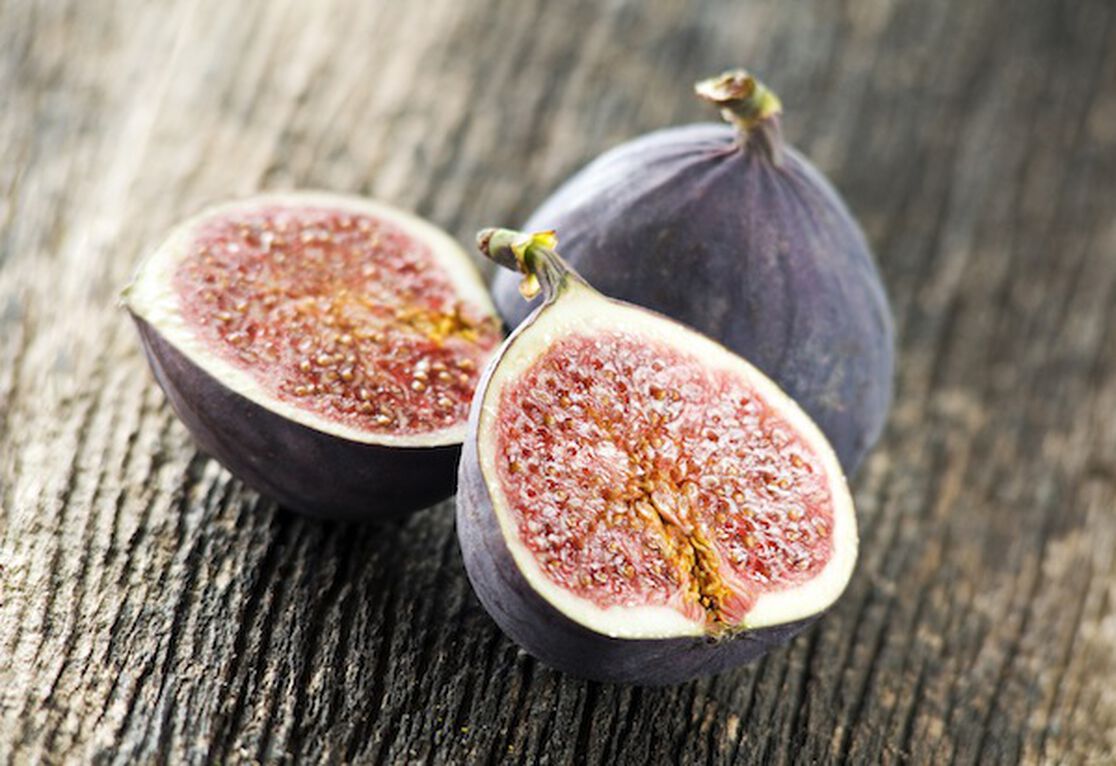There are food trends and food staples. Figs fall into the latter culinary category. The fruit seemingly has remained popular since the beginning of time. According to the The Wellness Encyclopedia of Food and Nutrition by Dr. Sheldon Margen and Dale A. Ogar, “Adam and Eve were said to have clothed themselves with fig leaves, so one could assume that they were also eating the fruits in the Garden of Eden. Ancient Egyptians knew that figs were an extremely nutritious fruit, and in Greece, the first Olympians not only savored the fruit, but wore them as medals for their achievements.” They truly are nature’s first candy.
Figs, considered fruit of a species of ficus tree, are technically hollow ended stems containing hundreds of inverted flowers. When you cut one open, what you’re actually looking at are multiple individual fruits, each bearing a single seed! They are native to the Mediterranean region and still common in traditional dishes from that area. Typically sweet and mild flavored, figs can be eaten whole and raw, yet almost 90% of the world’s fig crop is sold as dried fruit (then eaten or rehydrated for use in cooking).
Figs are today’s featured superfood because, overall, their nutritional value is quite impressive. They have the highest mineral and fiber content of all common fruits, nuts, or vegetables. One serving of figs (fresh or dried) provides 6% of the Daily Value for calcium and iron, and 7% of the Daily Value for potassium. Figs are an excellent source of dietary fiber (1 serving provides 5 grams of fiber — 20% of the Daily Value!). The fruit also is rich in antioxidants, which appear to increase as they ripen. All of this for about 20 to 40 calories per fig. It’s no wonder they’re called "nature's most nearly perfect fruit."
A few cautions regarding figs, though. Figs are a very safe food, but have a slight laxative effect and should not be consumed in excess particularly when dried. (If you have constipation, pop a few of these delicious fruits and you will be good to go!) Figs are among a small number of foods that contain measurable amounts of oxalates — a naturally-occurring substance found in plants, animals, and human beings. When oxalates become too concentrated in body fluids, they can crystallize and lead to health problems. For this reason, individuals with already existing and untreated kidney or gallbladder problems may want to avoid eating figs and discuss with their healthcare provider what other foods contain oxalates.
Now, try dishing up this month's superfood with this great recipe:
Roasted Fresh Figs with Goat Cheese & Balsamic Reduction
Ingredients (Use Organic When Possible)
- 12 fresh figs, cut lengthwise
- 1 tablespoon organic butter
- 3 tablespoons balsamic vinegar
- 3 tablespoons honey
- 2-3 ounces fresh goat cheese
- sea salt
Directions
1. Preheat the oven to 400ºF.
2. While the oven preheats, melt the butter in a small saucepan, along with the balsamic vinegar, honey, and a hefty pinch of salt. Bring to a boil, then reduce to a simmer and cook about 5 minutes, or until slightly thickened.
3. Place the figs, cut side up, in a baking dish the size of a pie pan. Top each fig with 1 teaspoon of goat cheese. Drizzle the balsamic vinegar reduction over the figs.
4. Roast in the oven until very soft, 10 to 15 minutes.
5. Arrange on a platter and sprinkle with sea salt.
Enjoy. And let us know how you incorporate this superfood into your diet!
We aim to provide you with the most honest and credible information possible. This article was reviewed for accuracy by The Honest Team and was written based on sources that are linked at the bottom of the article.
blog_review_statement



